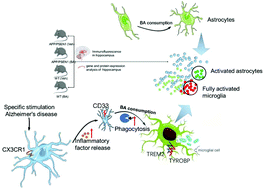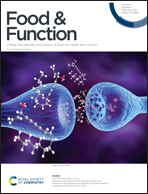Bilberry anthocyanins improve neuroinflammation and cognitive dysfunction in APP/PSEN1 mice via the CD33/TREM2/TYROBP signaling pathway in microglia
Abstract
Alzheimer's disease, characterized by neuroinflammation and beta-amyloid protein plaques, is a memory-threatening neurodegenerative disease with no effective treatment. Here, the effect of bilberry anthocyanins (BA) on cognitive functions was evaluated using APP/PSEN1 transgenic Alzheimer's disease model mice and their WT littermates. Our results revealed that BA appreciably improves learning and memory abilities and reverses defects to cognitive functions in APP/PSEN1 mice. Furthermore, BA reverses brain, liver and kidney damage caused by Alzheimer's disease, with no significant changes in oxidative stress and lipid metabolism-related indicators. In addition, BA decreases serum and brain lipopolysaccharide (LPS) levels and increases fecal short-chain fatty acid content. Immunofluorescence and RT-PCR analysis results showed that BA fully activates the microglia and astrocytes, downregulates the expression of inflammatory factors (TNF-α, NF-Kβ, IL-1β, IL-6, COX-2, iNOS and CD33) and chemokine receptor CX3CR1, and upregulates the expression of microglia homeostatic factors (TREM2 and TYROBP) and Toll-like receptors (TLR2 and TLR4). Moreover, western blot analysis revealed that BA significantly upregulates the expression of synaptic and phagocytotic function-related proteins (CD68, synaptophysin and IRF7) in APP/PSEN1 mice. Altogether, we show for the first time that BA consumption reverses Alzheimer's disease-induced cognitive disfunction, decreases hippocampal neuroinflammatory responses, and induces phagocytosis of microglia to beta-amyloid protein plaques by regulating the CD33/TREM2/TYROBP signaling pathway in microglia.



 Please wait while we load your content...
Please wait while we load your content...